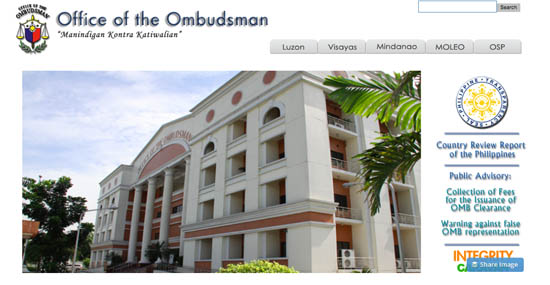Project Nationwide Operational Assessment of Hazards (NOAH) of DOST
Get real-time tools about rainfall, flooding, and other hazards in your community. Visit Project Nationwide Operational Assessment of Hazards ( NOAH) at http://noah.dost.gov.ph/
In response to President Aquino’s instructions to put in place a responsive program for disaster prevention and mitigation, specifically, for the Philippines’ warning agencies to be able to provide a 6 hour lead-time warning to vulnerable communities against impending floods and to use advanced technology to enhance current geo-hazard vulnerability maps, the Nationwide Operational Assessment of Hazards (NOAH) was launched by the Department of Science and Technology.
Know how to use the NOAH website
NOAH’s mission is to undertake disaster science research and development, advance the use of cutting edge technologies and recommend innovative information services in government’s disaster prevention and mitigation efforts. Though the use of science and technology and in partnership with the academe and other stakeholders, the DOST through Program NOAH is taking a multi-disciplinary approach in developing systems, tools, and other technologies that could be operationalized by government to help prevent and mitigate disasters.
NOAH’s immediate task is to integrate current disaster science research and development projects and initiate new efforts within the DOST to achieve this objective. Presently there are eight(8) component projects under the NOAH program, namely: 1) Hydromet Sensors Development, 2) DREAM-LIDAR 3-D Mapping Project, 3) Flood NET-Flood Modeling Project, 4) Hazards Information Media, 5) Enhancing Geo-hazards Mapping through LIDAR, 6) Doppler System Development, 7) Landslide Sensors Development Project, and 8) Storm Surge Inundation Mapping Project. The current NOAH Program team is composed of the scientist-leaders of these projects. The country’s warning agencies: PAG-ASA and PHIVOLCS are also represented.
Within two years, NOAH shall provide high-resolution flood hazard maps and install 600 automated rain gauges and 400 water level measuring stations for 18 major river basins of the Philippines, namely:
Marikina River Basin
Cagayan de Oro River Basin
Iligan River Basin
Agno River Basin
Pampanga River Basin
Bicol River Basin
Cagayan River Basin
Agusan River Basin
Panay River Basin
Magaswang Tubig River Basin
Jalaur River Basin
Ilog-Hilabangan River Basin
Agus River Basin
Davao River Basin
Mindanao River Basin
Tagum-Libuganon River Basin
Tagaloan River Basin
Buayan-Malungun River Basin
The other river basins of the Philippines will follow soon after the work on the 18 major river basins is completed.
The hazard maps are produced with computer simulations that reflect flood-prone areas discernible at a local scale or community level. Such maps are necessary for localized emergency response, identification of evacuation and access routes, road closures during disaster events, siting of key rescue facilities and comprehensive land use planning. The initial output of Project NOAH is focused on the Marikina Watershed. By March 2012, streaming data from the automated rain gauges and water level sensors, flood hazard maps overlain on Google Maps, graphical satellite radar and Doppler data forecasts, and translated rain intensity and volume measurements in terms of warning and evacuation level alarms, hours or days ahead of the flood event, will be accessible online. The output on the Marikina Watershed will serve as the prototype of the efforts done by NOAH and will be replicated for the entire Philippines. Information generated shall also be transmitted using other media and communication channels. Through the use of advanced science and technology, NOAH aims to improve disaster management capacity of local governments and assure homeland security by reducing casualties and property loss from extreme hazard events.

